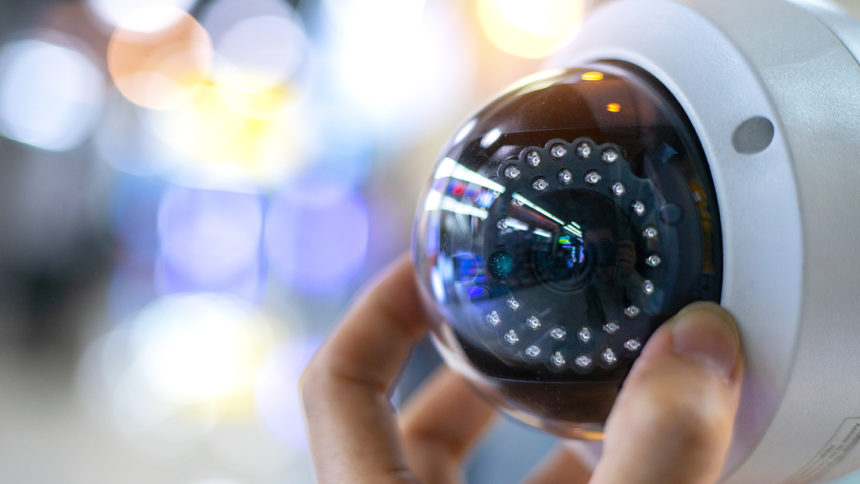
Resident security is a technology category as wide as it is long. From the first crude nurse call systems using strings to the latest generation of artificial intelligence-based technology, there’s been no shortage of creative innovations. Our experts take a look at some of the cool gadgets out there, as well as potential caveats in the field.
1. The world remains a very dangerous place, despite the lessening of some pandemic-related tensions. Keeping up with risks is a full-time job.
For Robert Moore, RN, RAC-CT, DNS-CT, director of strategy and portfolio management for MatrixCare, core risk-reducing suggestions include:
Implementing or upgrading access control systems with security features like key card entry, biometric authentication, or keypad locks; enhancing surveillance systems with features such as cameras, motion sensors and alarms; implementing wander management systems with wearable devices or sensor-based technologies; and upgrading communication systems with intercoms, emergency call buttons or wireless nurse call systems.
In addition to keeping residents safe, these tools can help prevent workplace violence. That threat continues to grow in the healthcare landscape, says Jeanne Venella, strategic advisor at Commure Strongline.
“Consider adopting technologies that are designed to prioritize prevention and de-escalate incidents of violence before they get worse,” she says. For example, consider “duress-alerting badges,” or panic buttons that quickly summon help.
2. Explore emerging AI technologies. Security tech, including predictive analytics, voice recognition and virtual assistants, incorporates AI-powered cameras and sensors that can analyze patterns and behaviors to detect concerning activities such as falls, wandering or signs of distress and enable voice commands, said Moore.
By reducing routine tasks, other AI tools “can augment human management of residents in facilities,” adds Patrick Hardy, president of Hytropy.
“These solutions are providing us with insights, empowering us to become more proactive rather than reactive in care delivery for residents and patients, as well as some fundamental problems that we are trying to solve for, including pressure ulcers, infections, and of course, falls,” adds Heather Hallett-Duda, vice president of clinical success for Safely You.
3. Tread cautiously through all of the AI “noise.” “Owner-operators must first ask themselves: ‘What is the fundamental problem I am trying to solve?’ And what clinical and business outcomes would be improved if this problem were no longer to exist? And does this vendor have a simple solution to solve my problem?” Hallett-Duda says.
“Too often, I see facilities adopt wholesale technologies because they seem cutting-edge, and determine the money they spent did not solve any of their most pressing issues,” Hardy says, suggesting a simple cost-benefit analysis to ensure resources go where they make the most sense.
4. Elopement and falls detection items are not close to maturity. “There absolutely have been notable developments in curbing detection,” says Hallett-Duda, whose company has clinically reviewed over 100,000 on-the-ground events promoting such tech. She stresses ensuring that any artificially enabled fall detection technology be utilized to ensure prompt response time for care delivery.
“Facilities need to be careful in evaluating these programs,” added Hardy. “Yes, they offer great potential, but these systems can require a lot of maintenance and require significant staff training.”
5. For all of its benefits, much of the emerging resident security technology is now being developed as a welcome set of extra eyes and ears to supplement smaller staffs.
“There is a great opportunity now to define outcome measures that capture how falls detection technology can reduce EMS and ED visits,” says Hallett-Duda. “When we consider the impact of thinned staffing, there is a significant impact as it relates to falls. This could include reduced time spent on assessment and interventions.”
Meanwhile, Hardy cautions facilities “to evaluate any technology by exploring potential IT vulnerabilities and the training for implementation that will be required.”
Finally, Venella stresses that “a concerted effort to boost whole-facility security — for residents and staff alike — is essential.”
Mistakes to avoid
- » Overestimating any technology’s capabilities. Scrutiny pays off.
- » Failing to prioritize your workforce. Small lifts with significant impacts on safety are best.
- » Neglecting ethical considerations when it comes to resident and staff privacy.
From the July/August 2023 Issue of McKnight's Long-Term Care News




